-
Posts
5,391 -
Joined
-
Last visited
-
Days Won
3
Content Type
Profiles
Forums
Blogs
Gallery
Events
Store
Posts posted by Gordon Williamson
-
-
does this look genuine stamped deschlersohn,will ad more pics
Deschlersohn is a known fake mark found on all sorts of reproduction medals and awards. Obviously intended to refer to Deschler & Sohn in Munich, there was never a genuine mark with the firm's name all run into a single word in this way.
0 -
does this look genuine stamped deschlersohn,will ad more pics
Deschlersohn is a known fake mark found on all sorts of reproduction medals and awards. Obviously intended to refer to Deschler & Sohn in Munich, there was never a genuine mark with the firm's name all run into a single word in this way.
0 -
Zinc corrodes easily, so they aren't necessarily a red flag. Pitting is not abnormal. Holes caused by air bubbles during the casting process are a bad sign, but these don't look to me too much like casting bubbles.What is the edge of the medal like ? Castings will normally exhibit a raised line around the edge where the two halves of the mould seperate.
To be honest its such a common, low value award that I haven't seen any significant efforts to produce a sophisticated high quality fake. They tend to be either very poor quality soft metal castings with weak detail which are easy to spot, or are made in better quality metals than the originals and are in near perfect condition. This example looks like the Zinc that mid-late war examples were made in and shows crisp detail.
Again, based on the images shown, I'd say it looks like an original Zinker.
0 -
Hi Ben,
It looks like a late war Deumer made piece.
0 -
As far as can be told from these images, looks like an original late war piece in Zinc which has lost its original finish and with a replacement ribbon.
They do fake them, but originals are common enough, especially the Zinc pieces. Looks OK.
0 -
Indeed, one of the most difficult of all U-Boat Badges to find. Not many collections have this one. Congratulations Hubert !
0 -
I'm not convinced that the colour of the box can be taken as an indicator of date. I've had a couple of mint examples of the first type Schwerin Destroyer Badge with the mis-struck swastika which were in their original tissue wrapping and blue boxes. Certainly that type of badge pre-dates 1942.
Both Schwerin and Juncker badges can be found in both blue and brown boxes and I strongly suspect that these were simple generic boxes which both firms probably bought from the same suppliers and the colour of box in which a badge is found is most likely just related to which batch the badge maker had bought from the box makers.
Don't doubt for a moment that the awards used during that ceremony for the Atlantis crew were brown but I tend to reckon that this was just because thats the way this particular badge came from Juncker. A different batch on another occasion may well have been in blue boxes.
0 -
Nice example. When you say 'based in Dresden' do you mean that as in the same way that Heer units had depots in certain Wehrkreis while the main units were actually located in Russia (in the Zugwach case protecting trains through partisan held areas while the admin 'tail' remained in Dresden) etc or would he of only manned trains running out of Dresden checking passes etc with other Zugwach units responsible for the train when it went past the German border?
Yep, thats my take on it. The "Staffel" was the standard sub-unit for the Zugwache, so he personally was based in Dresden, probably part, as you say, of the admin staff there and as Chris suggests, was probably a highly thought of administrator who they didn't want to see dragged off to some front line post in the closing days.
Based in Berlin at the end, not 100% sure but I think the last unit entry is "Zugfrontleitstelle Berlin"
0 -
- i would imagine these
sailors became quite attached to an "old friend".
joe
You are absolutely correct Joe. I have photos of some amazingly shabby old caps and tunics still being worn by U-Boat officers. Of course they all had some nice dress uniforms available too, but clearly some had their particular favourite tunic or cap that they wore until it literally fell to pieces.
0 -
since i know little of these caps,
could you explain the significance of the metal band added to the visor?
also the embroidered figures on the strap??
my thanks!
joe
NCO caps had a shiny black compressed fibre peak, whereas officer caps had a cloth covered peak, the edge trim being embroidered in gold wire / yellow celleon thread. The design of the trim indicated rank grouping - a narrow scalloped trim as shown here indicated ranks from Leutnant to Kapitänleutnant, a wider band, of oakleaf design, indicated Korvettenkapitän to Kapitän, and a double row of oakleaves from Kommodore to Grossadmiral.
Within these rank bandings, specific rank was indicated the the sleeve rings on the reefer jacket, or by shoulder straps on other jackets.
It was quite common where a senior NCO was promoted to officer rank, that an old cap rather then being discarded, was upgraded either by adding a correct officer style peak, or by adding hand made (as in Peter's cap) or purpose made metal trim to replicate the embroidered trim.
The markings on the chinstrap of the cap immediately above, were added by the original owner -each one indicating a ship sunk by his boat.
0 -
Awards, -
1914 EK2
1914 EK1
Imperial Wound Badge in Black
Frontkämpfer Ehrenkreuz
1939 Spange zum EK2
Wound Badge in Black
Treuedienstehrenzeichen in Silver
The last one a little strange - a civilian award, but looking at his pre-war occupation , he was a Teacher, so this award most likely relates to his position as a Civil Servant.
 0
0 -
Service with Zugwachabteilung z.b.V. 513 based in Dresden. Interesting insert stating he is a specialist and not to be used for any other purpose. A very useful document in the last days of the war when all sorts were being rounded up and stuck into ad hoc units for the front.
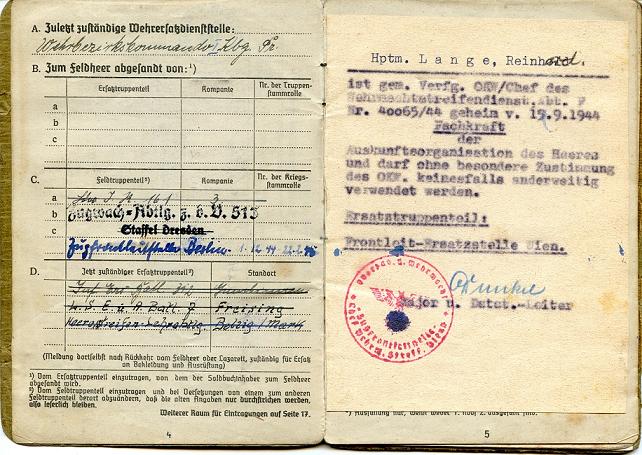 0
0 -
This guy was in fron the first day of the war to the last. His Soldbuch is opened in August 1939.
 0
0 -
Another Zugwache Officer Soldbuch, to a veteran of WW1. You can just make out the mini Spange to the EK2 on his ribbon bar.
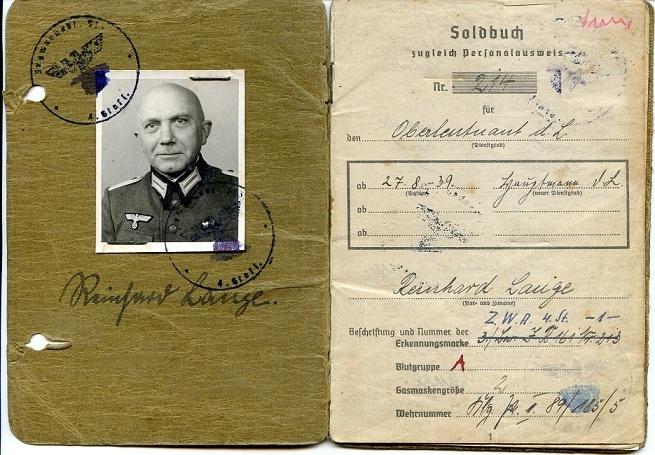 0
0 -
The trim is held on with prongs on the reverse, just like a cap badge.
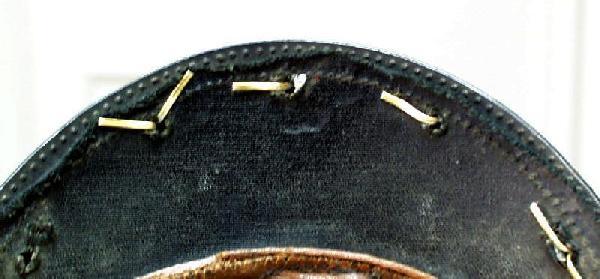 0
0 -
The Assmann firm actually made exactly replicas of the peak embroidery in metal for such eventualities, though hand made examples seem to be more common.
This is one my favourites from the U-Boat Archive collection, with the Assmann style metal "embroidery".
.
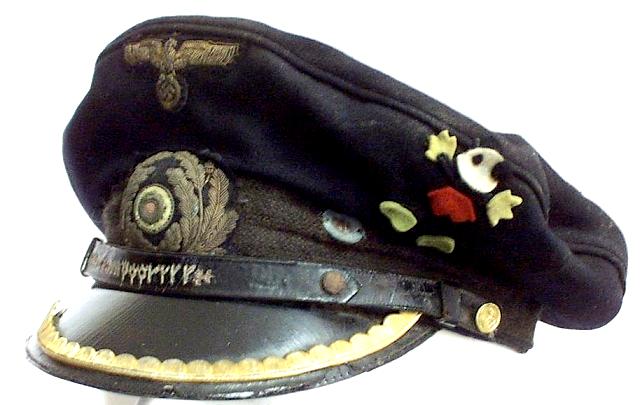 0
0 -
Quite stunning Kevin !
Its a shame that so many document collectors seem to find it hard to see further than the typical "Glamour" units, -Panzers, Fighter Pilots, U-Boats etc, and such incredibly rare material like this is so neglected.
Absolutely wonderful !
0 -
Well, at long last it looks like my big 1/200 Bismarck will have a companion. They finally decided to release a similar model of the Hood.
Not much of her yet, just the beginnings of the bow section. I'll post some progress shots as she goes along.
Hopefully they won't pull the plug on it before they finish the set, as these partworks often do if sales aren't strong enough ! I think though that the prospects are good that they will follow this one through.
 0
0 -
Compared with a German Type IX, the larger of the two principal German U-Boat types. Despite the more roomy interiors of the Japanmese subs there was apparently little consideration given by the designers for crew comfort.
 0
0 -
These were BIG boats. Far bigger than a German U-Boat.
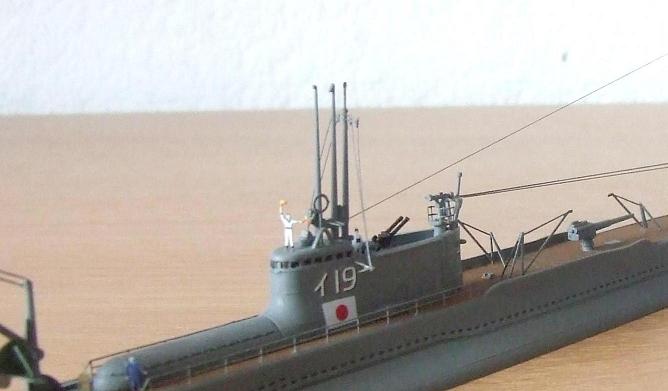 0
0 -
The B1 class was a highly adaptable design. Here's an earlier version complete with catapult launched spotter plane. This is I-19
 0
0 -
With medal to show an idea of scale. Overall the model is around 30cm.
 0
0 -
Sadly, the scale here (1/350) doesn't allow for the kind of deatil on the fabulous Kaiten model by Snoopy.
The figures on deck are just 4mm high !
 0
0 -
Here is one of the subs that acted as "mother" to the Kaiten mini-subs. This is I-58, a B1 class which carried 4 Kaiten, two on the fore deck and another 4 aft.
 0
0




KM Breast Eagle
in Germany: Third Reich: Wehrmacht Medals, Decorations & Awards
Posted
Every stamped sheet metal example of this type of eagle I have ever owned has had some form of barrel or block hinge. I don't particularly like this very flimsy style of hinge which is exactly the type used on many postwar restrikes of things like the hollow back IMperial Wound Badge and the postwar versions of the Imperial Wound Badges etc.
Having said that I have seen a late war example of one of these KM metal eagles in Zinc rather than Brass, which had this sort of hinge so it appears they were used in wartime but I know for sure that fakes of these metal breast eagles were made with this style hinge back in the 70s which would by now be showing a fair bit of natural age and tarnish.
Not one I'd be falling over myself to buy unless it was at a bargain price. Much better to go for one of the more accepted hardware set-ups as these things are not exactly rare. (Weitze for instance has over 30 of them on his site at the moment).